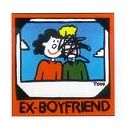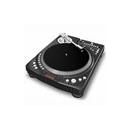Y aqui os dejo tambien una texto en ingles tb de los foros del ableton oficiales donde hablan tb de la configuracion del ableton.
Texto original en Ingles en
http://www.ableton.com/forum/viewtopic.php?t=39073
Hi Gang,
So, I've been working feverishly over the weekend getting this thing up to speed with Ableton Live. I thought I would share my decisions for setting up an Ableton Live template using the DJM-800 and maybe help others that are trying to get their head around getting this combo working effectively. For this set up, I'm using the following:
1- Ableton Live 5.2
2 - Motu UltraLite Audio/MIDI Interface (w/ 8 outs, 1 midi in/1 midi out, powered by Firewire bus) - but any multiple audio out interface w/ midi ports will do.
3 - Apple MacBook Pro 15"
4 - Last, but not least, the DJM-800 mixer.
The goal of this particular template assignment is to allow 4 virtual decks (or 8 if you use all four channels on the mixer via audio out from your audio interface). Here is my template for 4 virtual decks Plus two additional mixer channels to be used for drum machines, CD player, or whatever your fancy (this, btw, is my ideal set up when I have all my gear available for sync'ing).
The Set Up:
1. MIDI Out from DJM-800 -> To Audio Interface MIDI port in
*Note: If you have external gear that is syncable via MIDI clock (or you want to get extra advanced and control that external MIDI gear using the DJM-800, then you you need to either have a MIDI routing box from the DJM-800 that splits the MIDI signals so that they can be routed to the computer and the external gear at the same time), you will need to route a MIDI clock/start/stop signal back from the computer to the gear using your Audio/MIDI interface MIDI Out port.
2. Configure Ableton Live to accept MIDI from the DJM-800 via the MIDI port in Ableton's preferences.
*Note: You need to select at the minimum, Track and Remote for the input to have Ableton accept the 800's MIDI controller messages. Chose Sync as well if you want the mixer to also provide MIDI clock. (BTW not recommended if you are only using Ableton Live. You don't want BPM from the Mixer being set by the track playing in Live that is also setting the speed - it will screw up the MIDI timing).
3. Advanced users will also want to send MIDI clock from Live back through their Audio/MIDI interface via Live by selecting Sync in the Output section in MIDI preferences. Hook your MIDI out cable to your external syncable gear's MIDI In port. Make sure your external gear is set up to accept external clock (and start/stop) messages.
*Note: You will need to adjust your track latency in Ableton Live to sync up your external gear. If you don't your beats will phase or will be off if you don't adjust. This is important if you want to have a tight sound.
4. Hook up all your audio cables (or digital cables, depending on your audio interface) to the DJM-800. In my case, I'm running Ableton Live with two physical L/R tracks out of the Motu Interface (MOTU Line Outputs 1/2 go to the DJM-800's Line Input L/R Channel 2 on the DJM-800 and MOTU Line Outputs 3/4 go to the DJM-800's Line Input L/R Channel 3).
*Note: This is the physical hook up with wires and NOT the software based configuration in Live that I have yet to describe. In order to get 4 virtual turntables using Live, I will group 4 tracks in Live to be routed to 2 Send/Return tracks via the Sends Only option pull down in their track output configuration (which is found in session view on the tracks themselves) for their output assignment in Live... but I'll describe that in more detail below). Right now I'm just describing the phyiscal hook up.
5. If you have external groove gear or whatever, hook that up to. Ostensibly, Channels 1 and 4 on the DJM are good options because it keeps your Live tracks on the two center channels and the outside channels dedicated to your other gear.
Okay - Last step. Time to configure Live to route 4 virtual tracks (or turntables ) into 2 DJM Channels (2 & 3 as described above). Basically do this:
6. Create 2 send and return tracks in Session view, not Arrangement view (usually Live has two already, but if not, make sure you have two). Eliminate any MIDI tracks in Session view and make 4 audio tracks. You can label them at the top if it makes you feel better.
A. On all audio tracks one through four, select Sends Only in the Audio To pull down.
B. In the Sends dial for tracks One and Two, send 100% (all the way clockwise) to Send A.
C. In the Sends dial for tracks Three and Four, send 100% (also all the way clockwise) to Send B.
Now, on the Return Tracks (A and B) assign Audio To drop down to Exernal Out for both. For Return Track A, select tracks 3/4 for stereo output and for Return Track B, select tracks 5/6 for output.
NOTE - VERY IMPORTANT: Audio outputs 1/2 from the audio interface actually correspond to external out in Ableton as 3/4 and Audio outputs 3/4 from the audio interface actually correcspond to external out in Ableton as 5/6. Its just one of those things.... you can do a search the forum if you must know why.
NOW - when you place a track or a loop on any of the tracks and press play (or trigger them) you should be getting audio playing back through your DMJ-800 if:
1- you've turned up the levels, the tracks are not muted in Live, and you've got the volume up on the return tracks as well. If you don't have audio coming through channels 2 and 3 on the mixer, then go back and recheck your settings, etc. If you can't figure out, then that is what this thread is for. Let's help you figure it out.
THE GOOD STUFF. THE ASSIGNMENTS IN LIVE from the DJM-800. Here is what made sense to me and my set up. Your mileage may vary, but I tried to think through how one needs to use the phyiscal DJ mixer interface to control audio, while still being able to trigger things in Live without screwing up what is coming out from the DJM. This is the hardest part of using a device that has dual functions for every knob/fader/button.
First is DJ Mixer - Second is assignment in Live
Fader Start - Trigger clips from tracks 1,2,3, and 4 using the fader start buttons.
Cue Buttons for Channels 2 & 3 - Mute/Unmute for Return Tracks A & B
Channel Faders 2 & 3 - Track level for Return Tracks A & B respectively.
Booth Monitor - BPM assignment. I suggest setting a range in Arrangement view so you can make finer adjustments using this knob.
Level/Depth Knob - Scene selection so you can navigate scenes to trigger clips (using the fader start buttons)
Master Volume - Master level (not used in this set up to route actual audio, but its nice to have them correspond)
Beat Buttons under Display - left button/set loop (In), right beat button/set loop (out).
Tap - Loop On/Off
Knobs that I didn't assign to anything but could be used without jacking up your mix if you set them up right: Color knobs which I would assign to effects in the Return tracks in Live which would be fun as you could then double up the color effects WITH Ableton's effects as well making some wild combos (imagine a DJM crunch applied to a graintable delay from Live on a track! etc.); EQ Hi/Lo on Mic channels for Live effect parameters, and Cue/Master knob which only effects your headphone cue source but would allow you to effect something in Live without hindering the master output from the DJM.
Also: Using the crossfader assignments on the DJM to correspond to the crossfader assignments in Live. Doing that allows you to reassign them within the software on the fly through the DJ mixer.
CRITICAL LAST ASSIGNMENT
Okay - one last assignment that will give you the flexibility to mix four tracks from Live using two channels on the DJM.
- Assign Live Tracks 1 and 2 to crossfader A and B sides respectively (IOW, Track 1 is assigned to crossfader A, Track 2 is assigned to crossfader B). Live Tracks 3 and 4 to crossfader A and B respectively as well.
- Assign crossfader on the DJM to the crossfader in Live as well (found in the master out track MIDI assignable options).
Now you can crossfade between Live tracks 1 and 2 through the DJM channel 2 and crossfade between Live tracks 3 and 4 through the DJM channel 3.
Sweet! With practice you can do some really cool tricks running four tracks through two channels on the DJM using the channel faders and the crossfader. Its wicked, IMO.
The last point I want to make is that this is just my set up that I wanted to share (and provide some background for setup for those that are new to this Ableton Live thing using a DJM-800). There are tons of other options, but I tended to keep this clean and simple - but still effective for mixing up a storm.
You can take this same set up principle and use all four tracks on the DJM and route a total of 8 Live tracks into the DJM this way and have total sonic mayhem (minus the ability of triggering 8 tracks directly from the mixer interface, unless you use the blue color buttons in association with the Fader start buttons - but this assumes all four color buttons can be discretely assigned, which I don't think is the case yet. A fix or clarification from Pioneer is still pending).
And don't forget if you stick with just a four track ableton live set up, you have two more channels in the DJM to to wicked mixing stuff with (CDJ's, drum machines, whatever!).
GOOD JOB PIONEER. I hope this is useful. Sorry for the length, but I tried to be complete.
Take care,
Robtronik
http://www.socal-breaks.com
http://www.compressionla.com
http://www.speedclub.org 






